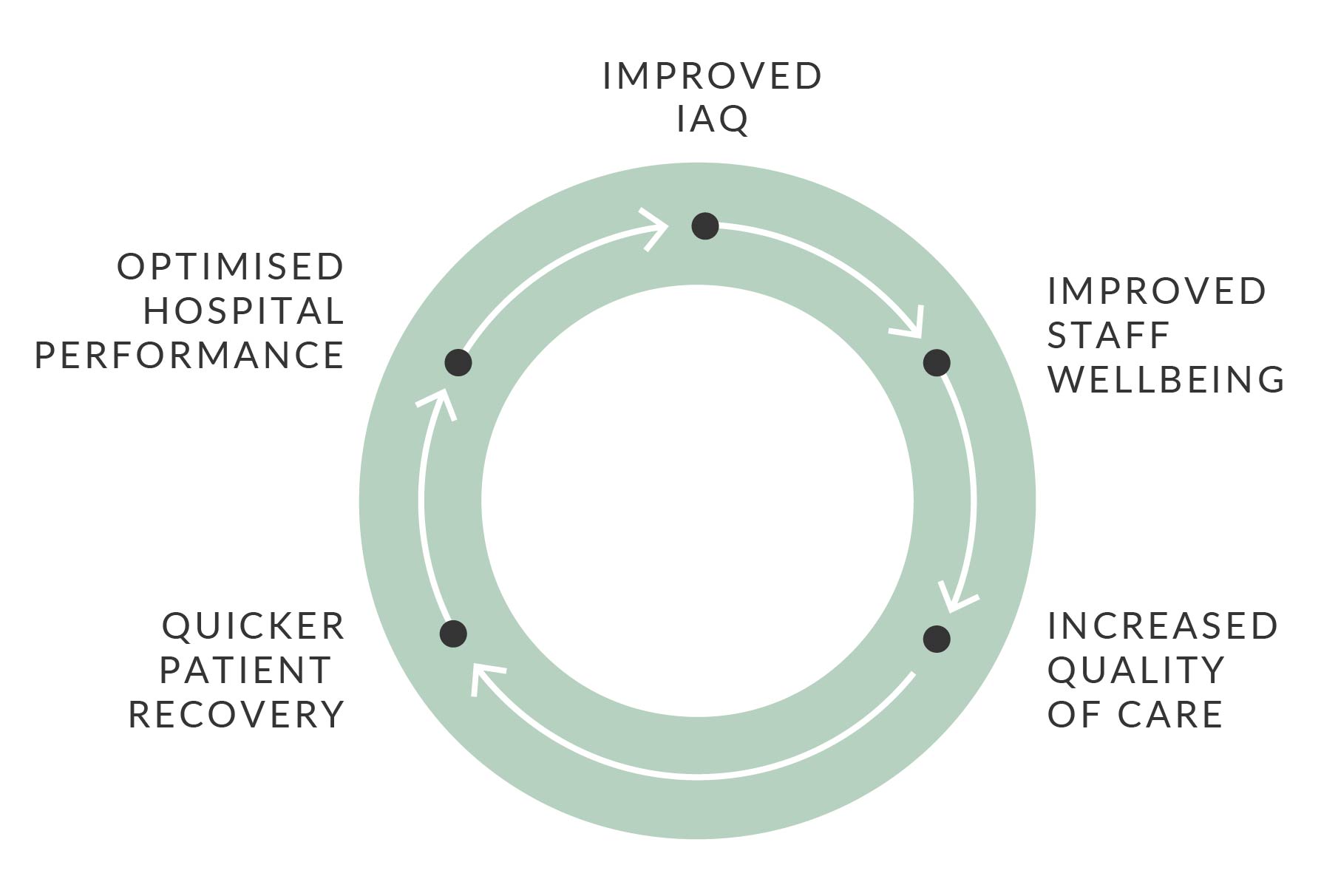Insights
Healthcare: a dose of air quality - part 1.
What can air quality offer to patients and staff?
Why healthcare and air quality?
People’s health and wellbeing is linked to the quality of the air they breathe. When we consider that, as adults, we typically spend over 80% of our time indoors the indoor air and the quality of it make up a big part of our daily dose. Air quality indoors varies enormously between buildings whether this be in homes, offices, shops or schools and this creates challenges around the prevention and control of air polluting sources.
Air quality indoors is especially complex within hospitals, and other healthcare settings. The large demographic, high and often variable occupancy patterns combined with presence of a range of pollutants make for a complex situation. The very nature of hospitals being places that care for patients who can be disproportionately affected by air pollution, even at lower concentrations, makes for a highly sensitive environment.
The health and wellbeing of people in hospitals are absolute priorities for the NHS with cleanliness being non-negotiable and the round-the-clock service of patient care. There is really no time for idle periods or downtime where the indoor air can recover. Maintaining the optimisation of air quality indoors is a critical part of this care and can be considered part of the patient’s recovery.
The primary responsibility of the NHS is to ensure the health and wellbeing of people and this encompasses the provision of optimised air quality for all.
Not only does optimised air quality indoors improve the health and wellbeing of people, but it also supports the government’s and NHS’s net zero carbon ambitions by ensuring hospitals are designed effectively with air quality indoors as a priority. Air quality indoors can serve as a bridge between all elements of building design and plays a fundamental role in supporting sustainability and economic benefits. As air quality has a range of interactions it is essential that it is considered in a holistic manner – through collaboration with the many different aspects and disciplines during the design stages and through into operation.
The cycle of hospital optimisation
When we think about the benefits of improving air quality indoors within hospitals, we will largely associate this with better air to breathe for the patients, however, improving air quality indoors is arguably just as important for the staff who work tirelessly within all areas of the hospital.
Benefits of improving air quality result in improved staff wellbeing, helping to increase the quality of care which supports quicker patient recovery. We see this in the correlation between poor air quality indoors and sick building syndrome and the latter’s subsequent effects on wellbeing and productivity. In addition, evidence also shows that there is a clear positive relationship between staff wellbeing and patient experience.
The inter relationships between all elements are crucial for optimising hospital performance and improving the health and wellbeing for all – creating a continuous cycle in which air quality indoors acts as a fundament component.

Healthcare and Air Quality Investment Feedback Cycle
A healthier environment for all ensures multiple aspects of the hospital are optimised and this starts with improving air quality indoors.
Indoor Air quality pioneers
Improving air quality in hospitals is essential in helping to prevent new illnesses in patients and to help avoid exacerbating existing symptoms. Healthcare projects have the potential to be pioneering in the transition towards harnessing the potential of optimised air quality and to showcase how good design and control measures can vastly improve people’s health and wellbeing throughout the hospital environment – from patients, to hospital workers and visitors. Optimising air quality indoors aligns with the principles of human-centric design and the core values of the Healthcare Sector Team. This was a key part of our recent thought leadership ‘Rehabilitating the healthcare machine.
As the Air Quality Healthcare Sector lead, I know air quality is a fundamental element for the design of healthcare projects and can add crucial value to support the design that focusses on the health and wellbeing for all users. Let’s talk!
Look out for Part 2 of this insight series, where I’ll be identifying the key sources that influence air quality and how early design intervention can ensure air quality indoors is optimised.
